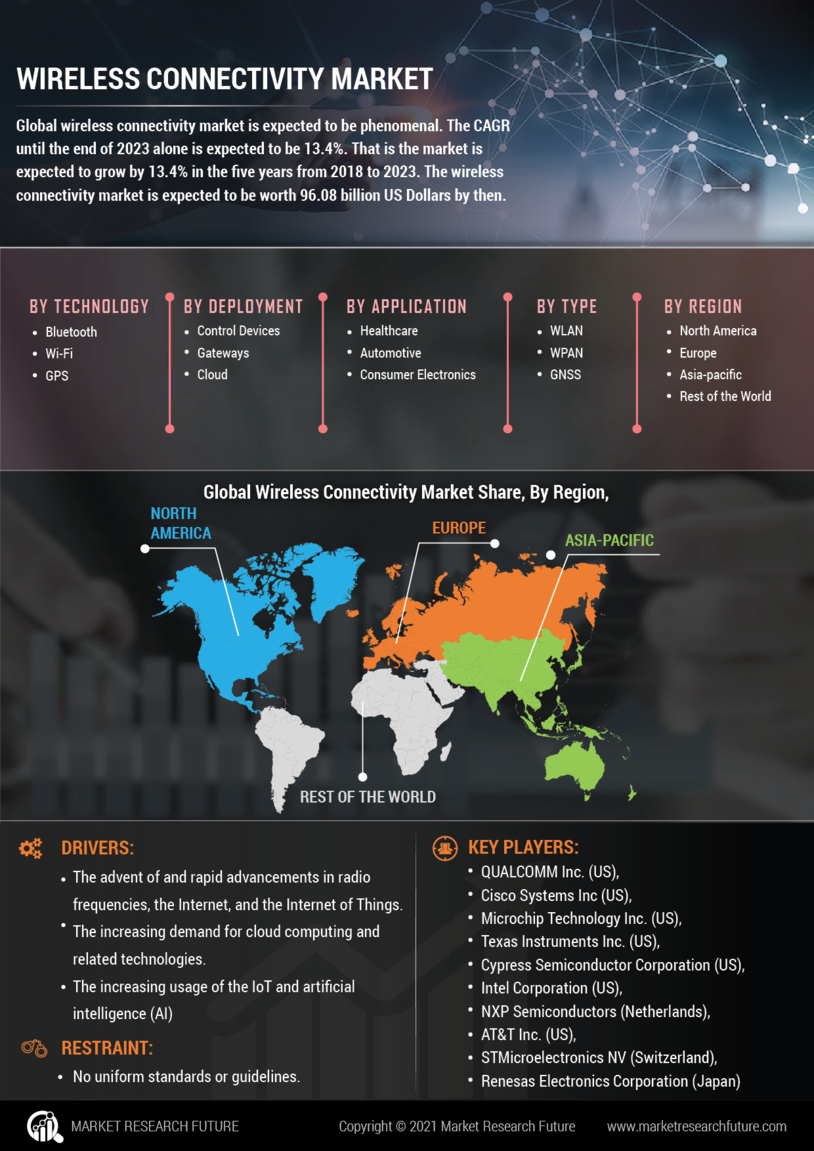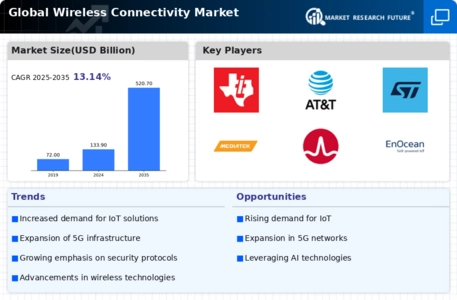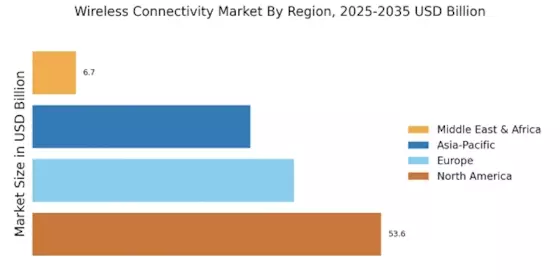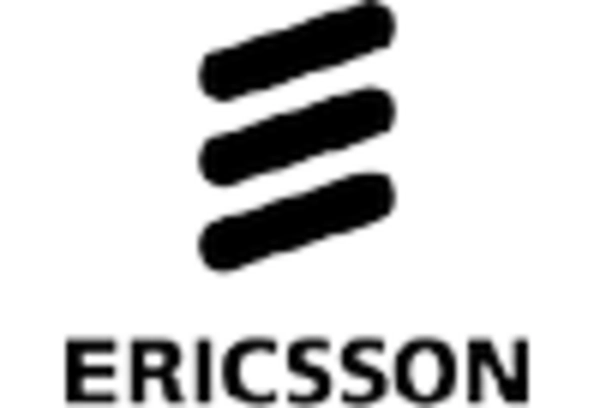Growth of Smart Devices
The proliferation of smart devices is a key driver in the Wireless Connectivity Market. With the advent of smartphones, tablets, and wearables, consumers are increasingly seeking seamless connectivity to enhance their user experience. Data suggests that the number of connected devices is expected to reach billions in the coming years, creating a substantial demand for robust wireless networks. This trend is further fueled by the integration of smart home technologies, which rely heavily on wireless connectivity for functionality. As manufacturers continue to innovate and introduce new smart devices, the Wireless Connectivity Market must adapt to accommodate the growing number of connections. This evolution presents opportunities for service providers to expand their offerings and improve network capabilities.
Emergence of Smart Cities
The development of smart cities is emerging as a pivotal driver in the Wireless Connectivity Market. Urban areas are increasingly integrating technology to improve infrastructure, enhance public services, and promote sustainability. This transformation necessitates extensive wireless connectivity to support various applications, including traffic management, public safety, and environmental monitoring. Data indicates that investments in smart city initiatives are on the rise, with governments and private sectors collaborating to create interconnected urban environments. As these projects unfold, the demand for reliable and high-speed wireless networks will likely escalate, presenting opportunities for growth within the Wireless Connectivity Market. The successful implementation of smart city technologies hinges on the availability of advanced wireless connectivity solutions.
Increased Adoption of Cloud Services
The shift towards cloud computing is significantly influencing the Wireless Connectivity Market. Businesses are increasingly adopting cloud services for data storage, application hosting, and collaboration tools, necessitating reliable and high-speed wireless connections. Recent statistics indicate that cloud adoption rates have soared, with a substantial percentage of organizations migrating to cloud-based solutions. This transition requires robust wireless infrastructure to ensure uninterrupted access to cloud services, thereby driving investments in wireless technologies. As companies seek to enhance operational efficiency and scalability, the demand for advanced wireless connectivity solutions is likely to grow. The Wireless Connectivity Market stands to benefit from this trend, as it aligns with the increasing reliance on cloud-based applications.
Rising Demand for High-Speed Internet
The Wireless Connectivity Market is experiencing a surge in demand for high-speed internet services. As consumers increasingly rely on digital platforms for work, education, and entertainment, the need for faster and more reliable internet connections becomes paramount. According to recent data, the number of broadband subscriptions has risen significantly, with a notable increase in fiber-optic connections. This trend indicates a shift towards higher bandwidth requirements, compelling service providers to enhance their wireless infrastructure. Consequently, investments in advanced technologies such as 5G are likely to accelerate, as they promise to deliver the necessary speed and capacity to meet consumer expectations. The Wireless Connectivity Market is thus poised for growth, driven by this insatiable demand for high-speed connectivity.
Regulatory Support for Wireless Technologies
Regulatory frameworks are playing a crucial role in shaping the Wireless Connectivity Market. Governments worldwide are increasingly recognizing the importance of wireless technologies in driving economic growth and innovation. Recent policy initiatives aimed at promoting the deployment of 5G networks and other advanced wireless solutions are indicative of this trend. By facilitating spectrum allocation and reducing regulatory barriers, authorities are enabling service providers to expand their networks and enhance service offerings. This supportive environment is likely to foster competition and innovation within the Wireless Connectivity Market, ultimately benefiting consumers through improved connectivity options. As regulatory support continues to evolve, the industry is expected to witness accelerated growth and development.

















Leave a Comment